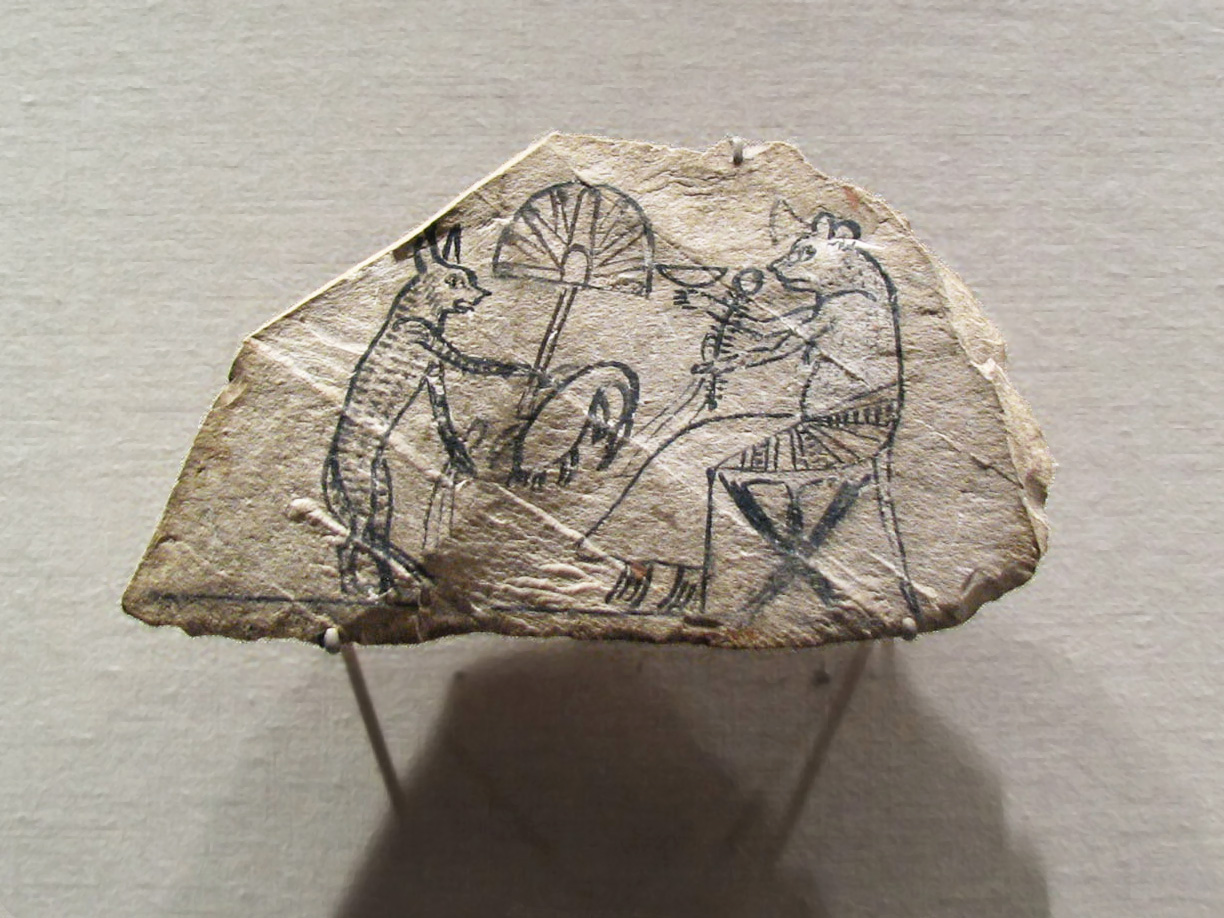|
"An ostracon is a piece of pottery (or stone), usually broken off from a vase or other earthenware vessel," Wiki explains. Ancient Egyptians made use of this cheap surface for a variety of purposes. "The subject matter varies greatly, and, without record of context or in instances of secondary deposition, function is often difficult to ascertain; often figured ostraca are interpreted as evidence for the training of artists, as in Deir el-Medina and the Ramesseum, but this is not made explicit by context or by accompanying writing." (Digitalegypt.ucl.uk))
Flinders Petrie turned up many ostraca, "most are probably from Thebes."
The Brooklyn Museum example is from Thebes, as is one now at the Metropolitan Museum:

Artist's Sketch of Senenmut
Limestone, paint; H. 22.5 cm (8 7/8 in); w. 18 cm (7 1/16 in); th. 3.5 cm (1 3/8 in)
New Kingdom, reign of Hatshepsut, ca. 1473–1458 B.C.E.
Excavated from Thebes, Egypt, near Senenmut's offering chapel
MMA #36.3.252, Rogers Fund, 1936
Photo © Metropolitan Museum |
This sketch of Senenmut, one of Hatshepsut's most trusted officials, is clearly a practice piece, showing the grid lines artists used to keep proportions correct, and "may have been used as a guide for the decoration of one of his monuments."
The Brooklyn ostracon seems more complete in itself, and is perhaps one of the worlds earliest cartoons.
(From the info card)
"A mouse, which scholars have interpreted as either an obese and thus prosperous nobleman or as a noblewoman with bared breast, is approached by a scrawny cat that acts as a servant. The servant cools the mouse with a fan while presenting a bolt of cloth and a trussed goose, The scene may have been intended as a satire on upper-class life in the Ramesside Period, or it may have illustrated a popular fable in which the natural roles of cats and mice were reversed."
|




